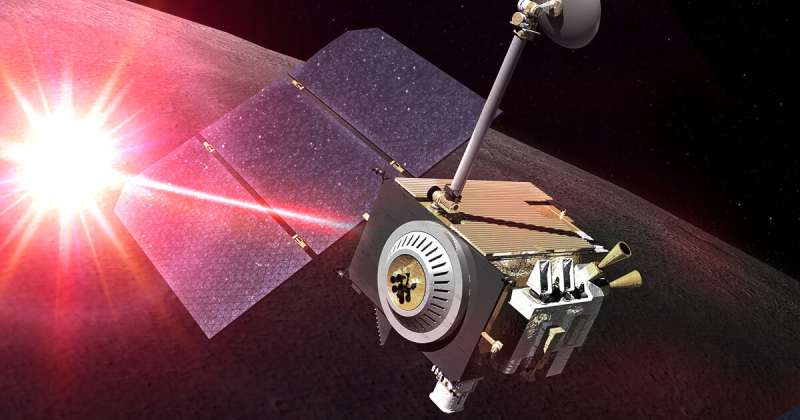India’s Vikram lunar lander was successfully targeted by a laser fired by NASA’s Lunar Reconnaissance Orbiter. But this was no new space war’s opening salvo; rather, it was a meticulously thought-out scientific experiment. After leaving orbit, the laser traveled roughly 100 kilometers (62 miles) to reach the Moon’s surface, where it struck a target that was only 5 centimeters (2 inches) wide. It was the first time a laser was directed toward a target on the Moon’s surface from its orbit.
The Indian Space Research Organization’s (ISRO) Vikram lander was equipped with a Laser Retroreflector Array, a tiny target about the size of an Oreo. NASA detected the laser once more as it whizzed around the Moon after it bounced off the target. The Earth uses light bouncing to determine the satellites’ orbital position. Using this method, one could pinpoint the exact location of a stationary object on the Moon.
NASA’s Goddard Space Flight Center mission leader Xiaoli Sun said in a statement, “We’ve demonstrated that we can locate our retroreflector on the surface from the Moon’s orbit.” In order for missions that wish to use these retroreflectors in the future, the technique must be improved.
As part of a collaboration between NASA and ISRO, Xiaoli Sun’s group created the retroreflector on Vikram. Light coming from any angle can be reflected by the apparatus. It doesn’t need power or upkeep because it is entirely optical. Accordingly, they may continue for decades to come determining Vikram’s exact location. Although Vikram isn’t really going anywhere because it’s no longer operational, it will be crucial to track the location of future missions as they travel across the Moon.
Remarkably, the aim was not the difficulty. Since the Apollo era, suitcase-sized retroreflectors have been deployed on the Moon. Because of them, we are aware that the Moon is revolving around us every year at a distance of 3.8 centimeters (1.5 inches). NASA made use of LOLA, the Lunar Orbiter’s altimeter, which is currently the only laser instrument available around the Moon. LOLA was not intended to hit such a small target; instead, it typically aims for an area 10 meters wide. LOLA has been operating for 13 years past its original mission.
NASA Goddard scientist Daniel Cremons, who works with Sun, stated, “We would like LOLA to point to this Oreo-sized target and hit it every time, which is hard.”
LOLA needed eight tries to successfully hit the Vikram retroreflector, but if it succeeds, future lasers with specific capabilities may make retroreflector technology an essential tool for lunar missions in the future. Additionally, Japan’s SLIM, which touched down on the Moon on Friday, has a retroreflector from NASA on it. LOLA can pull off the same amazing accomplishment once more.





